Grasshoppers, crickets & allies
22 of the 27 native UK species have been recorded on Dawlish Warren, this makes it one of the most outstanding sites in the UK. The wide range of habitats and the mild climate all combine to create the conditions for a wide variety of species. It is hoped that the following information will help recording these species on site. Please submit any sightings to the Recording Group and/or Devon Biodiversity Records Centre.
Oak Bush-cricket
Meconoma thalassinum
This species is present in the Entrance Bushes and in other wooded areas on site. Individuals have been found
on
the Visitor Centre and attracted to moth traps.
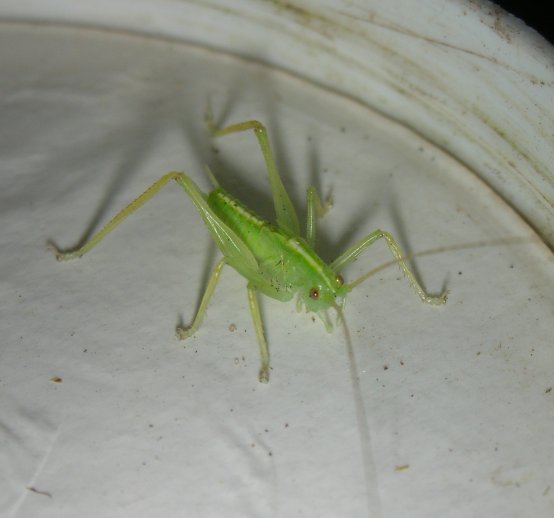
©
Matt
Twydell
Great Green Bush-cricket
Tettigonia viridissima
This Devon priority species is widespread on site, especially in areas of bramble
scrub. The loud stridulation easily reveals its presence, but despite its large
size they can be surprisingly difficult to locate.
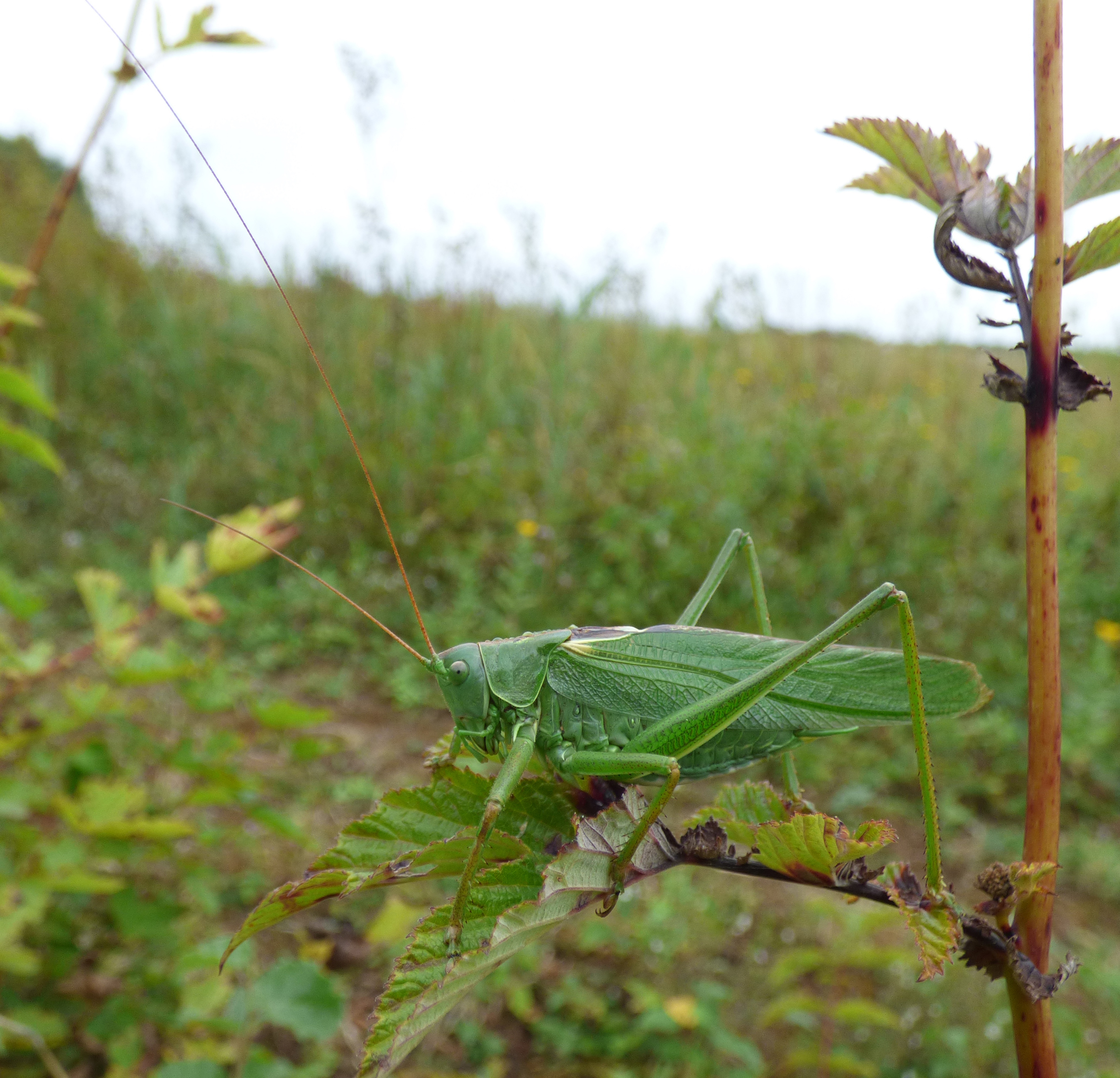
© Luke Harman
Dark Bush-cricket
Pholidoptera griseoaptera
This common species is widespread in south Devon, but despite searching, was
rare in the Recording Area. A single second or
third instar individual was recorded near the First Pond in 2000.
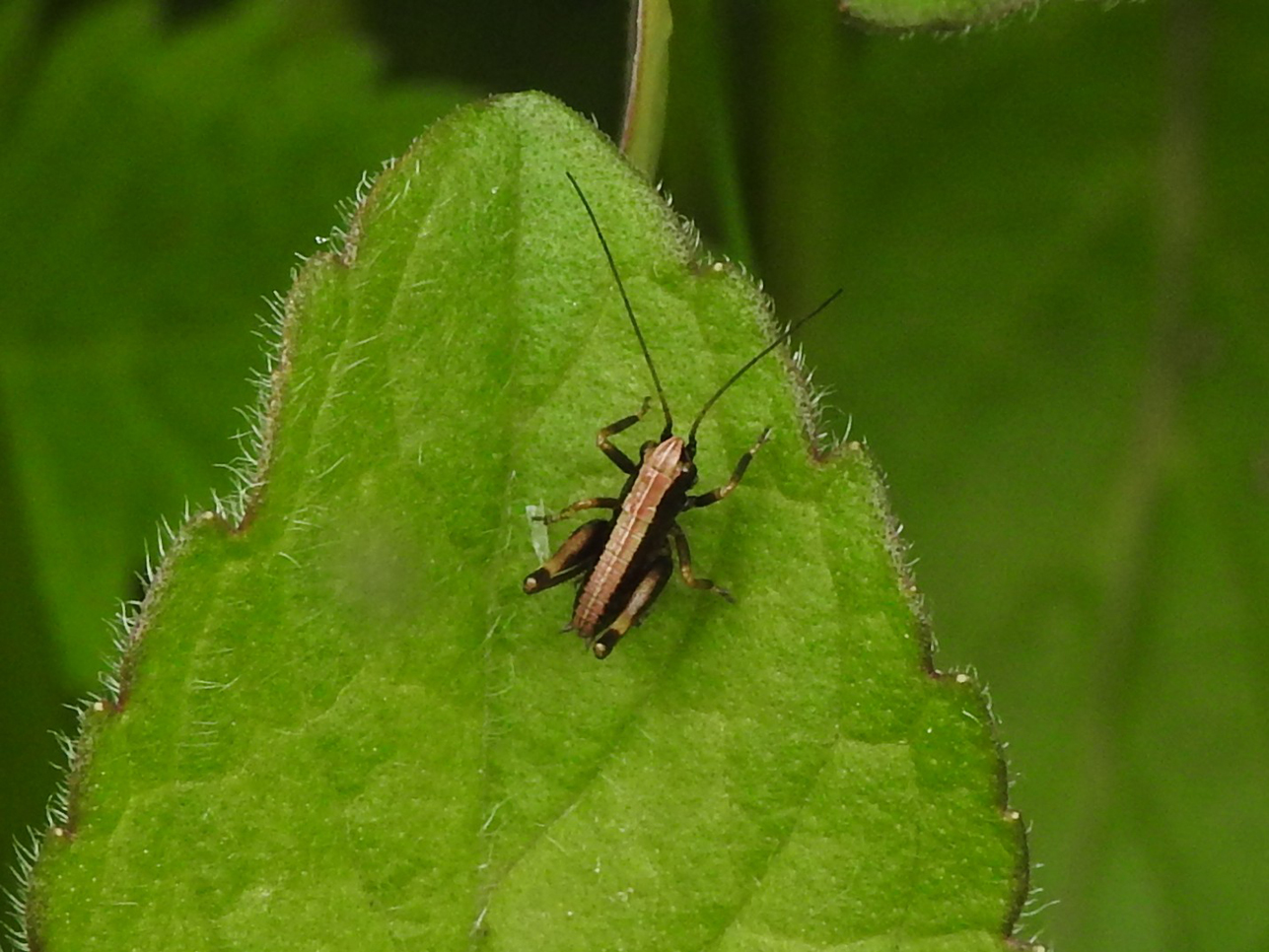
©
Alan
Keatley
Grey Bush-cricket
Platycleis albopunctata
This is a predominately coastal species which can be found on sand dunes and
cliffs along most of the southern coast of England. A single large instar was
recorded here in 1993, but there were no further records. This individual
was seen whilst planting trees in the Buffer Zone so might have been introduced on
them.
© Kevin Rylands
Roesel's Bush-cricket
Metrioptera roeselii
A macropterous (long winged) male was discovered
in the Back Meadow in July 2018, just the third Devon record for this species.
Expanding westwards, 2018 saw several more Devon records and it has
become established in the County, including across the water in Exmouth. The
second record was also a macropterous male, this time in Greenland Lake in
September 2021. Three more records followed in 2022...
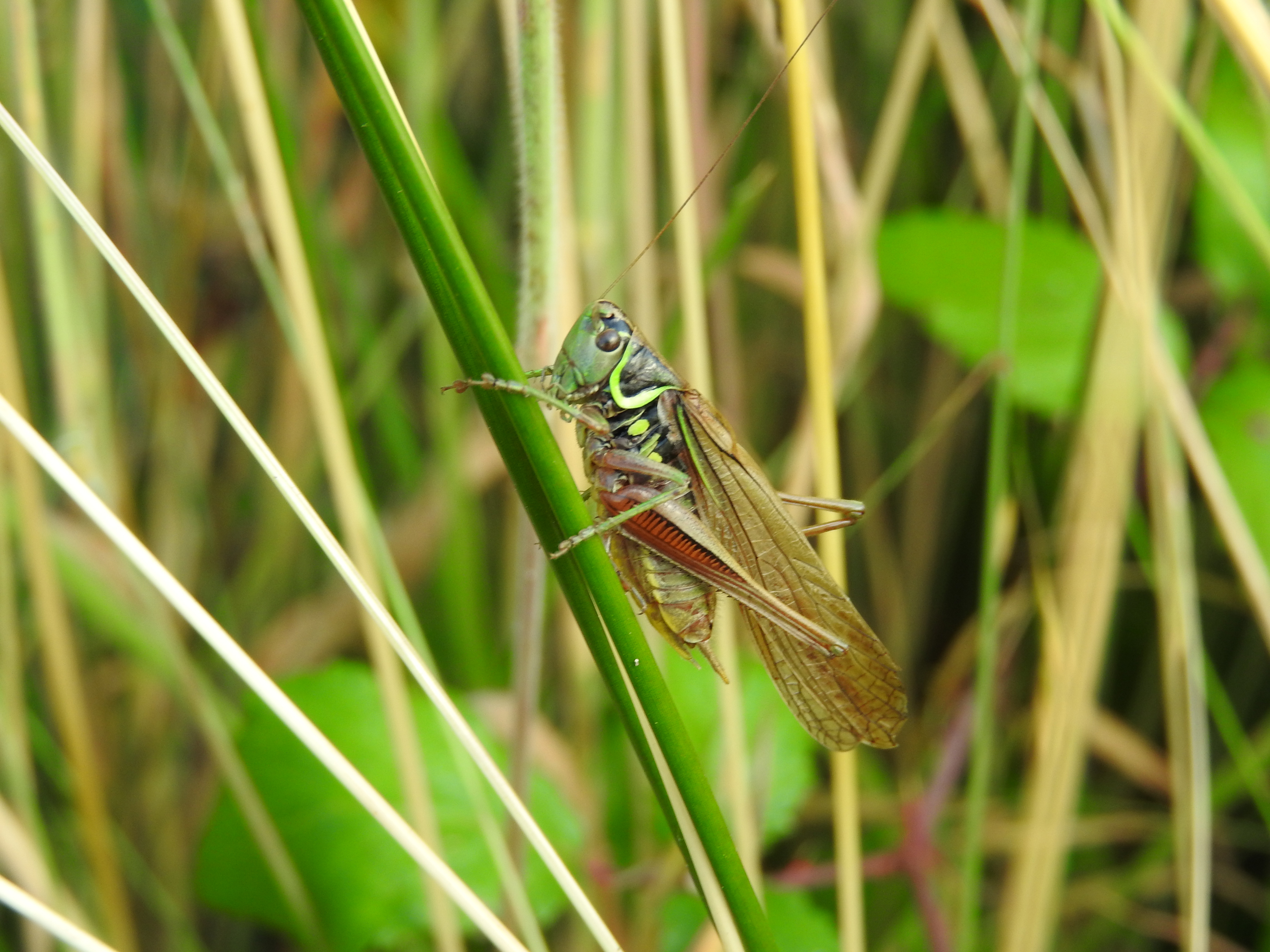
© Debs Rylands
Long-winged Conehead
Conocephalus discolor
This species is a recent arrival in the Recording Area, with individuals first
being noted in Greenland Lake in the mid 1990s. Since then a good population has
built up and it can be found in most areas of long grassland.
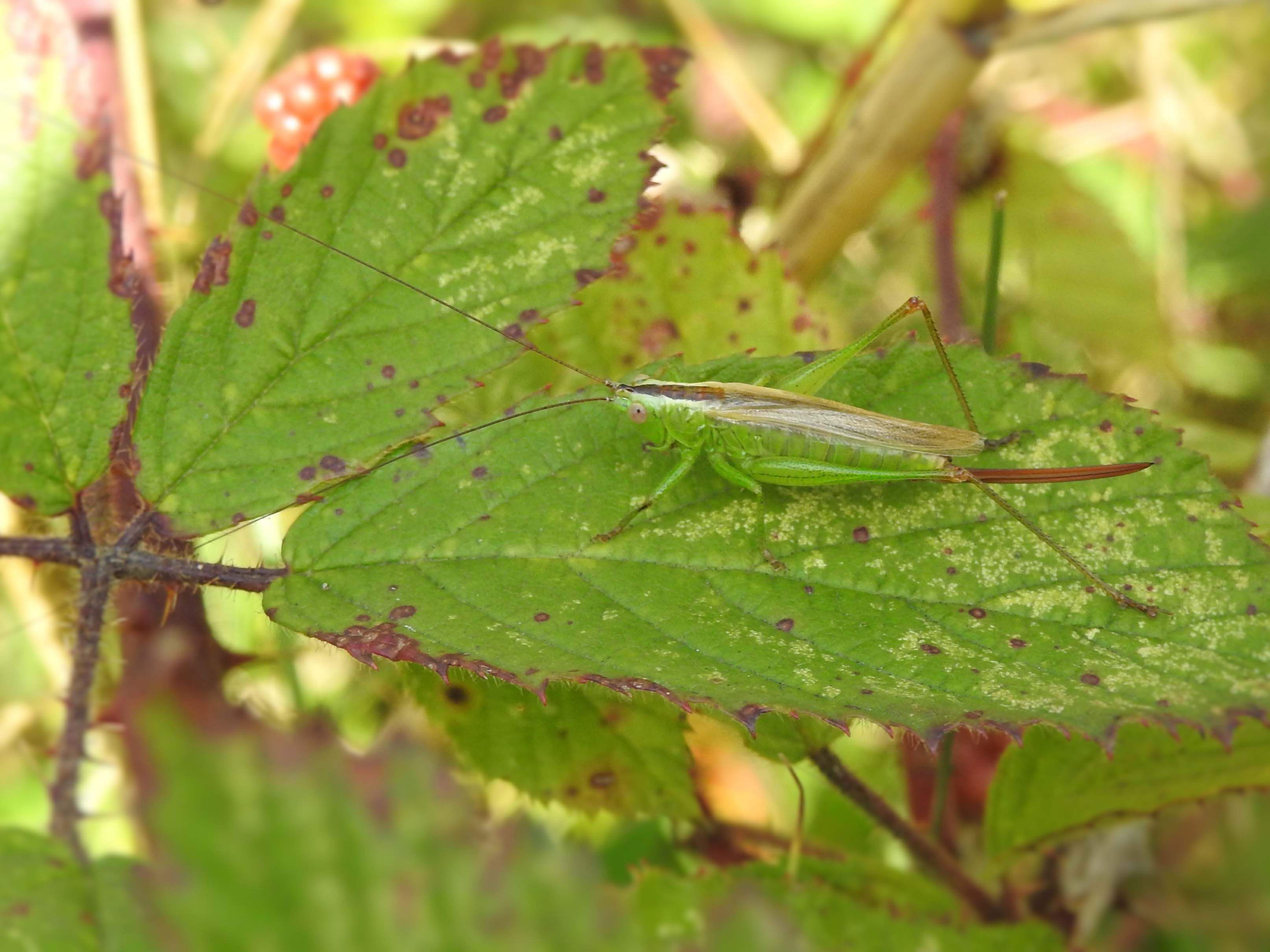
© Alan Keatley
Short-winged Conehead
Conocephalus dorsalis
A single female was recorded in the
Buffer Zone in September 2005, previous records of instars had not ruled out the
above species. Adults were also recorded in the saltmarsh in August 2008 & 2020, but
this remains by far the rarer of the two species present.
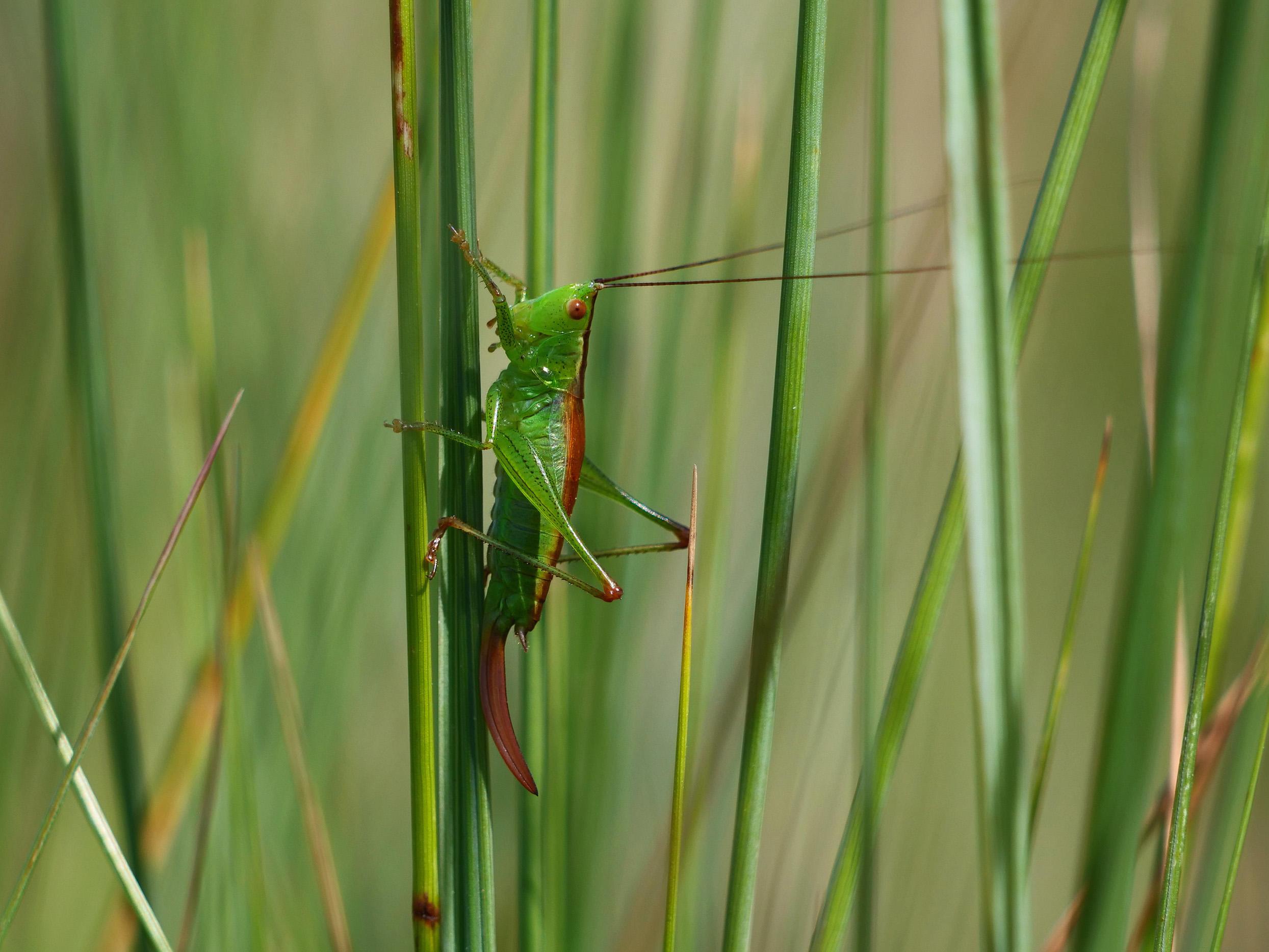
© David Smallshire
Speckled Bush-cricket
Leptophytes punctatissima
A single adult individual, recorded in the
Dogwood clump on Warren Point, in 1996 was the first record, but this species
was expected to occur
elsewhere on site.
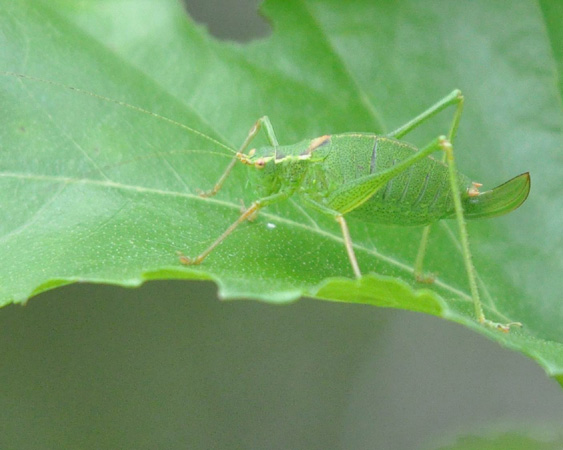
©
Simon Thurgood
Cepero’s Ground-hopper
Tetrix ceperoi
Has been recorded around the Entrance Bushes and Greenland Lake, although never
in numbers. This is one of the few sites in south Devon for this nationally
rare species but has not been seen recently.
Slender Ground-hopper
Tetrix
subulata
Discovered in Greenland Lake in April 2009, no doubt overlooked previously, this
species is still present, but scarce.
© Alan Keatley
Common Ground-hopper
Tetrix undulata
This species is found in similar areas to its rarer
relatives, often in good numbers. It is the only native orthopteran that can be
found at all times of year.
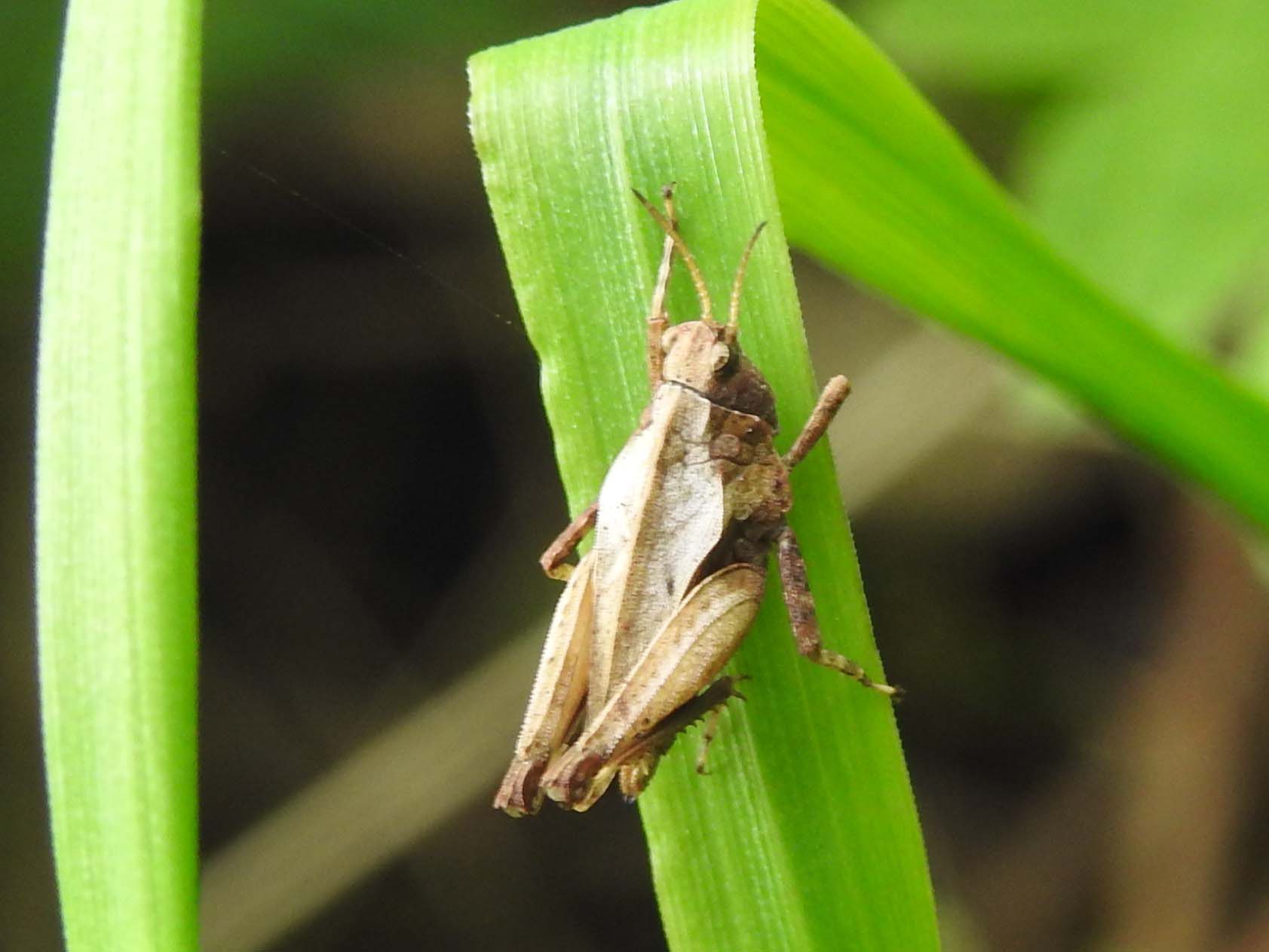
© Alan Keatley
Common Field Grasshopper Chorthippus
brunneus
A widespread species that is commonly
found on site. If disturbed adults can fly good distances to escape.
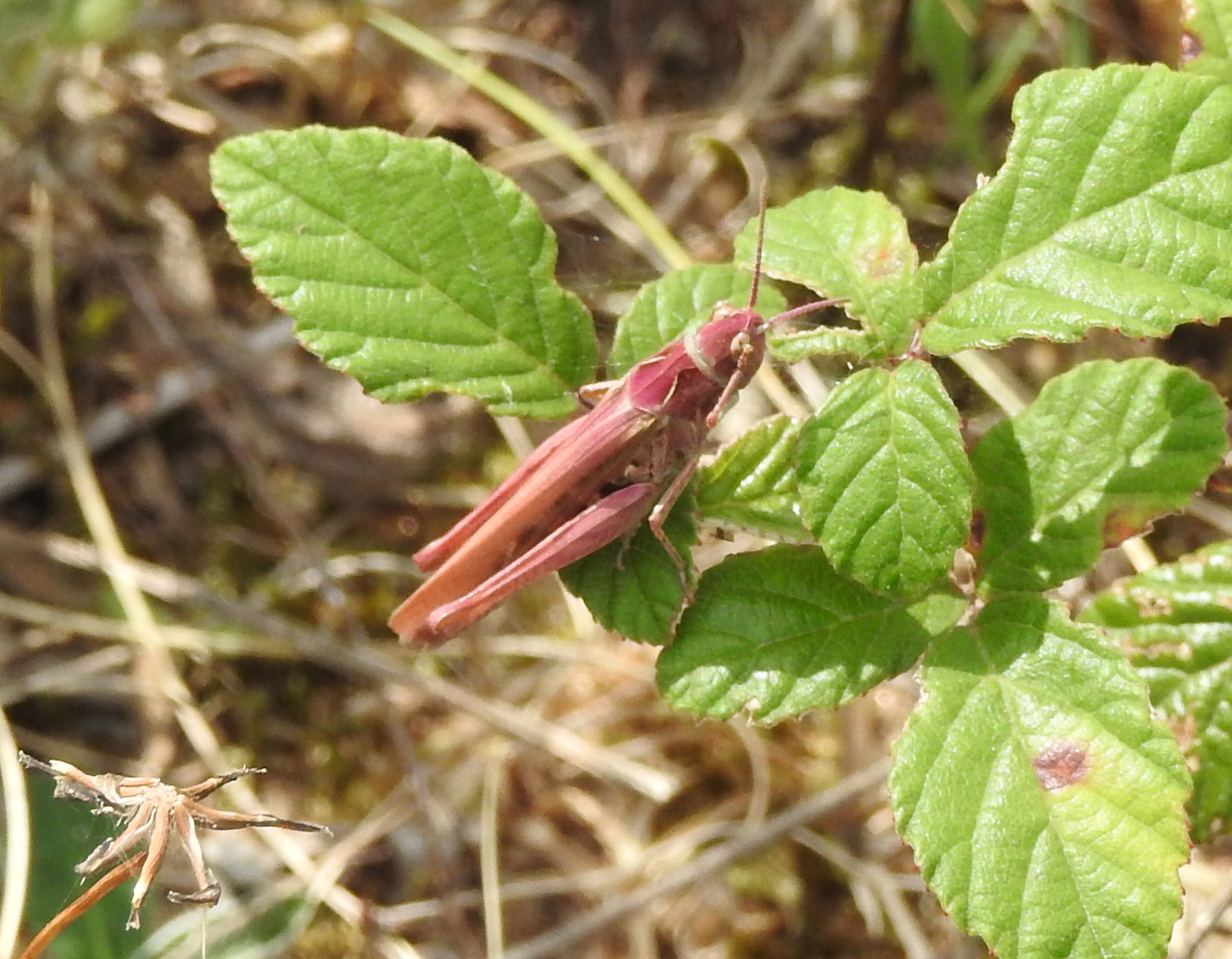
a pink morph © Alan Keatley
Common Green Grasshopper Omocestus
viridulus
A widespread and common species, but not
noted at the Warren until 2019.
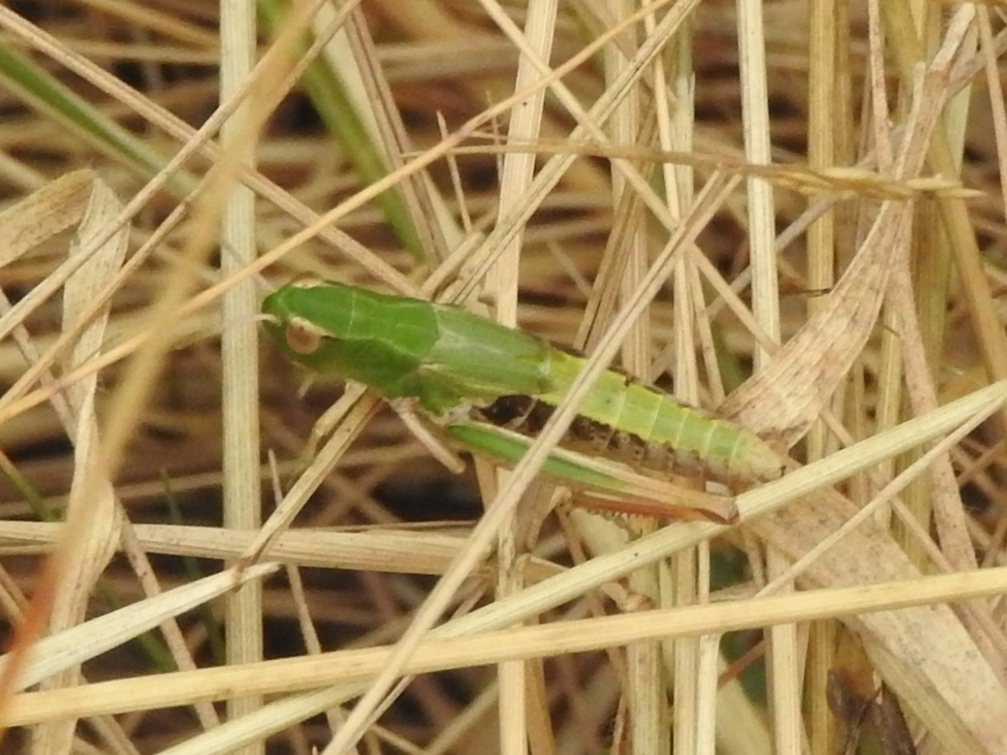
late instar © Alan Keatley
Meadow Grasshopper
Chorthippus parallelus
Another widespread and common species, this
is the most numerous grasshopper on the Warren.
Lesser Marsh Grasshopper
Chorthippus albomarginatus
This species is rare in the southwest and
this is one of the few sites it occurs in Devon. Several individuals have been
recorded in the saltmarsh at the back of the Golf Course. Elsewhere on the Exe, it
is also recorded at Exminster Marshes and
the Old Sludge Beds.
Rufous Grasshopper
Gomphocerippus rufus
The first Devon record of this nationally rare
species was found here by Parfitt in 1881. Unfortunately it has long been
extinct on site.
Mottled Grasshopper
Myrmeleotettix maculatus
This species prefers areas of short sun-baked turf, especially inward of the Dune Ridge,
Dusky Cockroach
Ectobius lapponicus
Dawlish Warren is one of very few sites were this species can be found in
Devon. It has been recorded on Warren Point, but presumably occurs elsewhere on
site.
Tawny Cockroach
Ectobius pallidus
Like Dusky, this species is rarely recorded in Devon. Here it is recorded
more frequently than the above species, coming regularly to moth
traps.
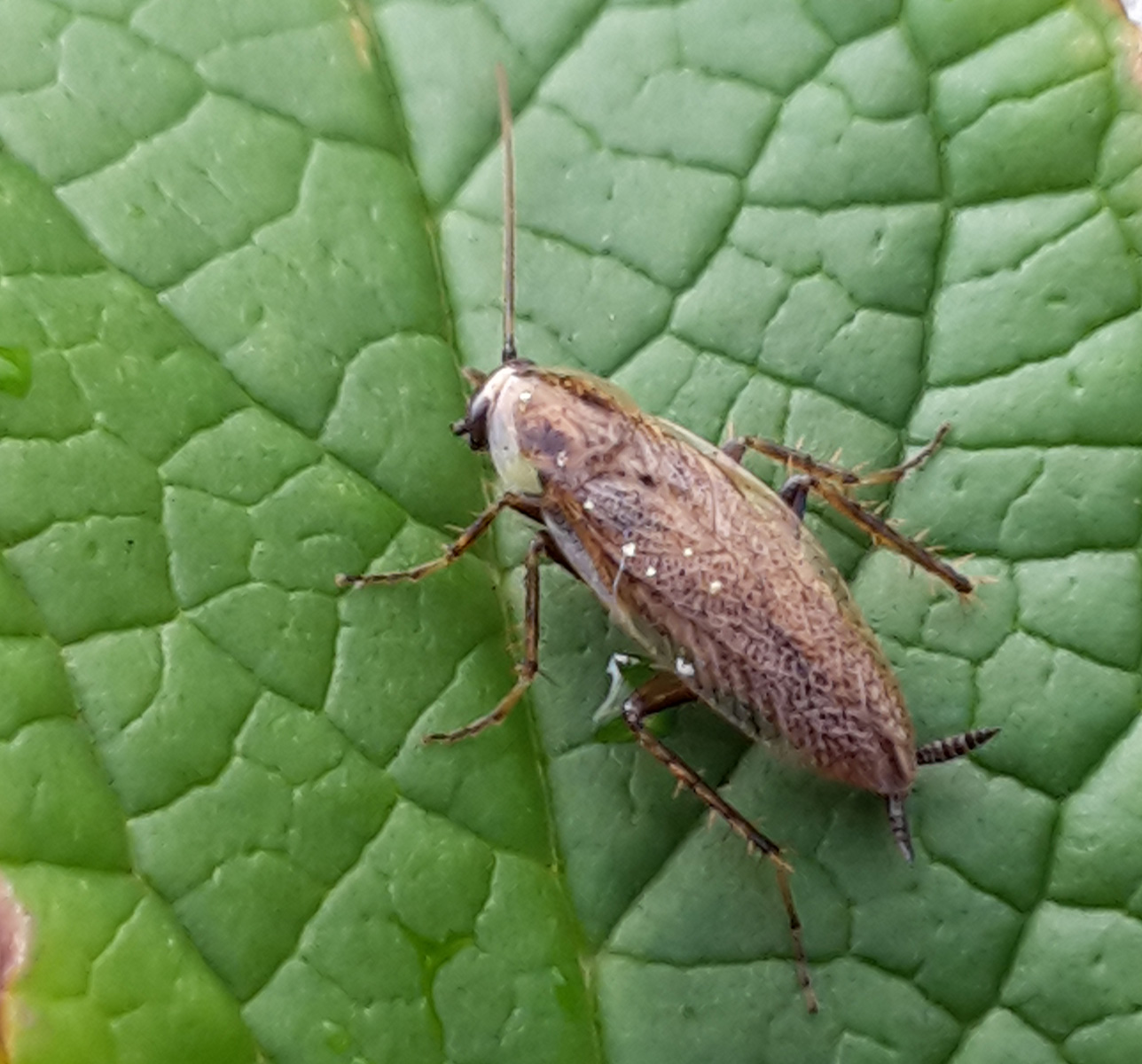
© Kevin Rylands
Lesser Cockroach
Ectobius panzeri
The most frequently encountered of the three native cockroaches in the
Recording Area. It can be particularly numerous in the short grass on Warren Point.
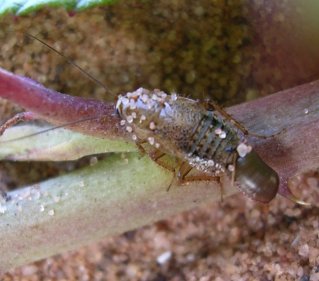
© Kevin Rylands
Common Earwig
Forficula auricularia
As elsewhere this species can be encountered almost anywhere on site.
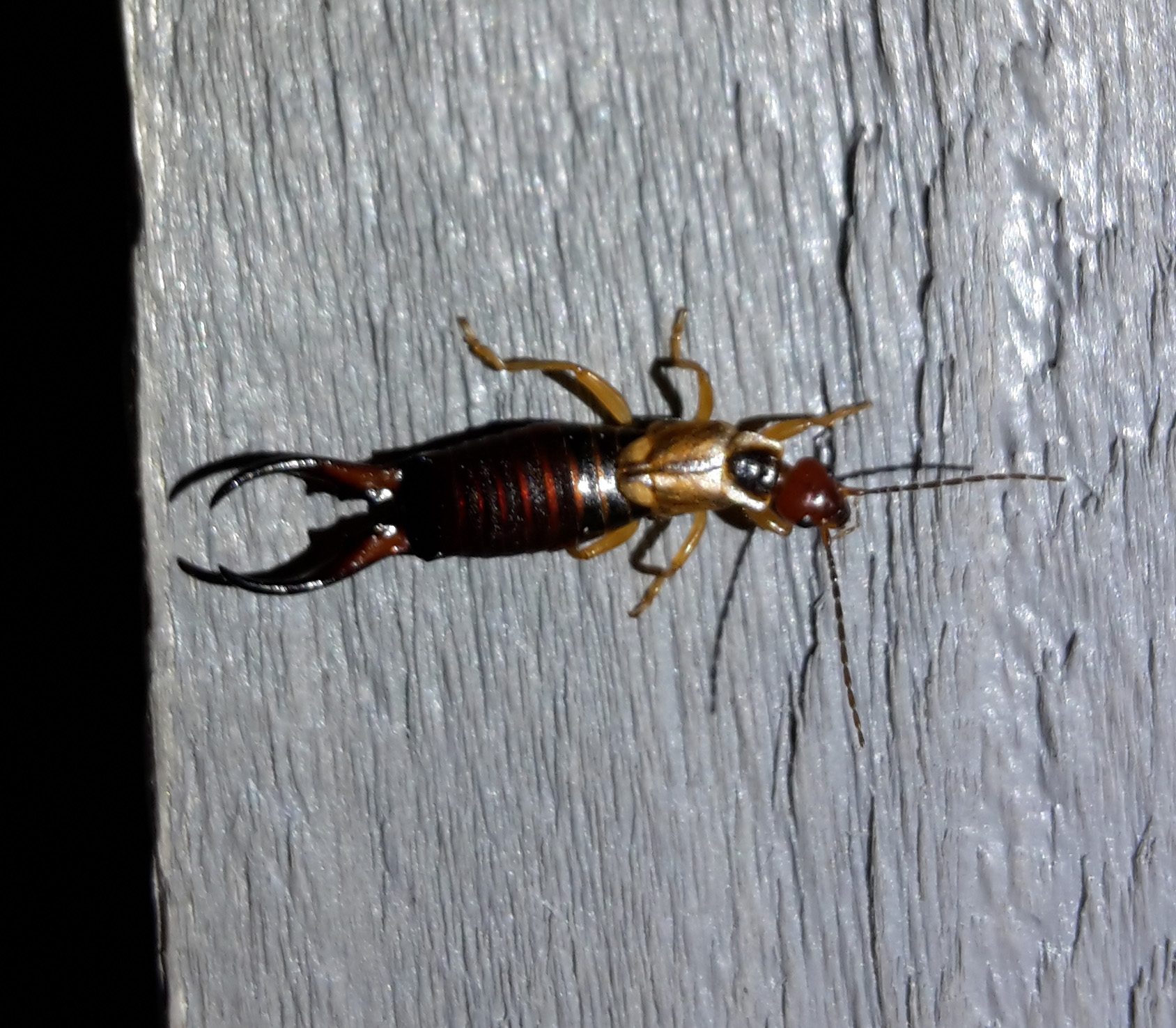
© Kevin Rylands
Lesne’s Earwig
Forficula lesnei
One found by John Walters near the car park in October 2003 was the first
record.
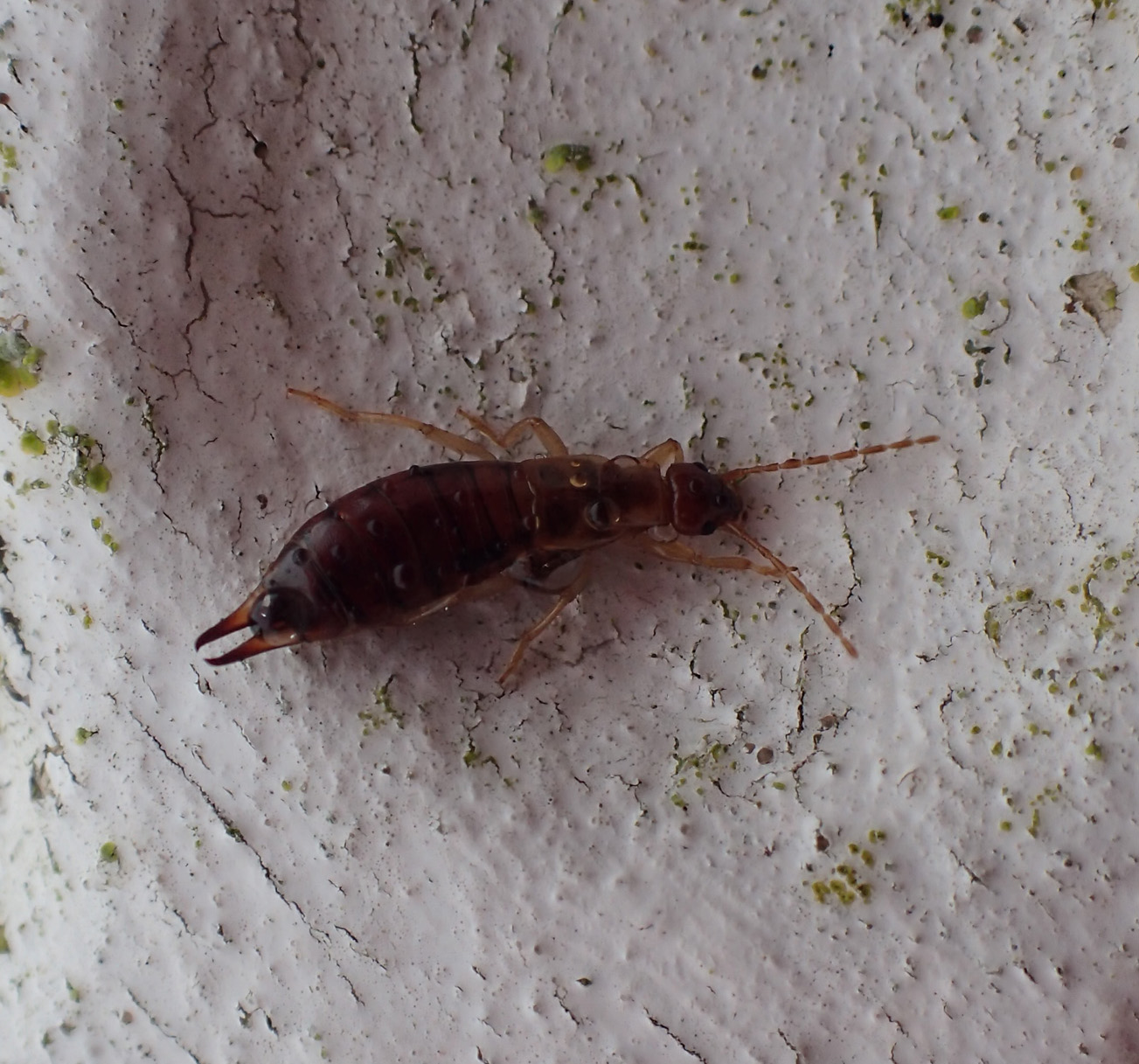
© Kevin Rylands